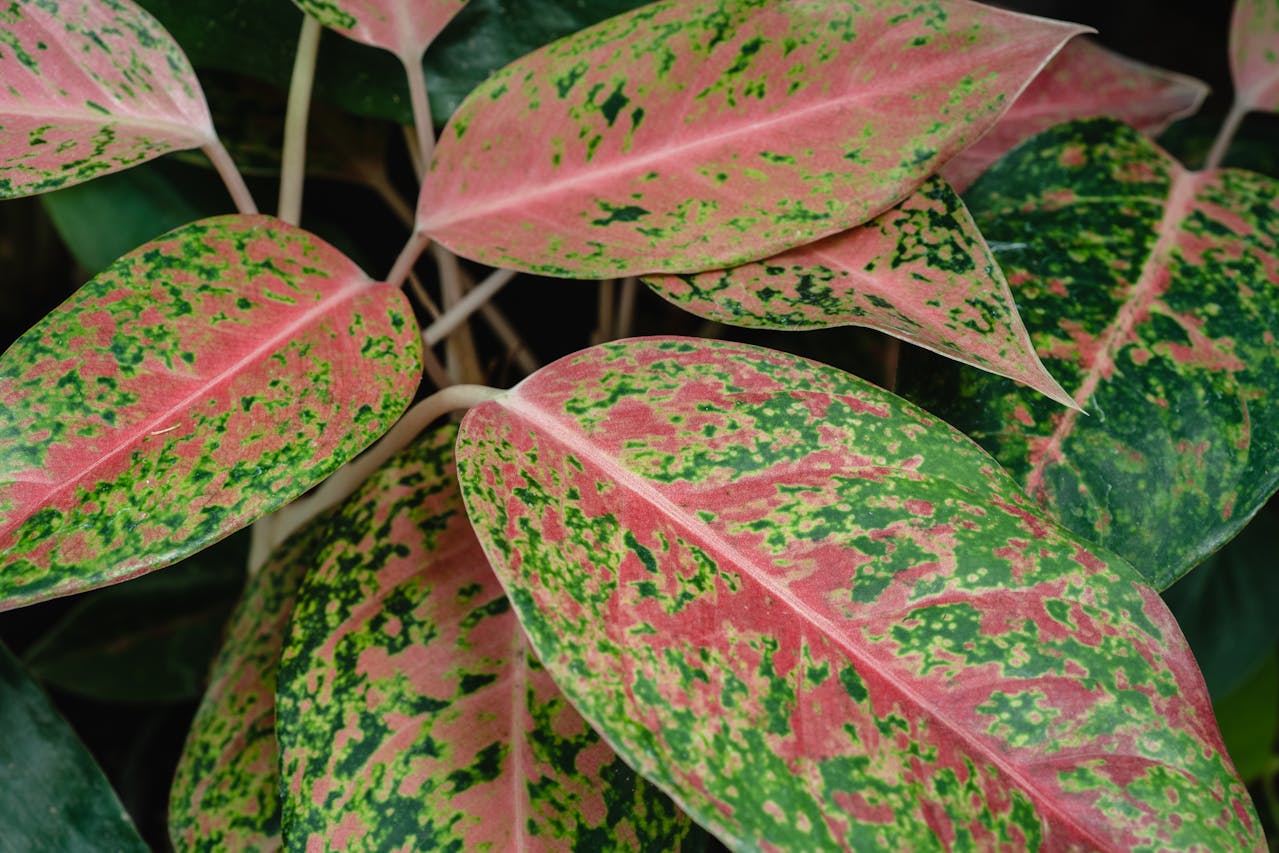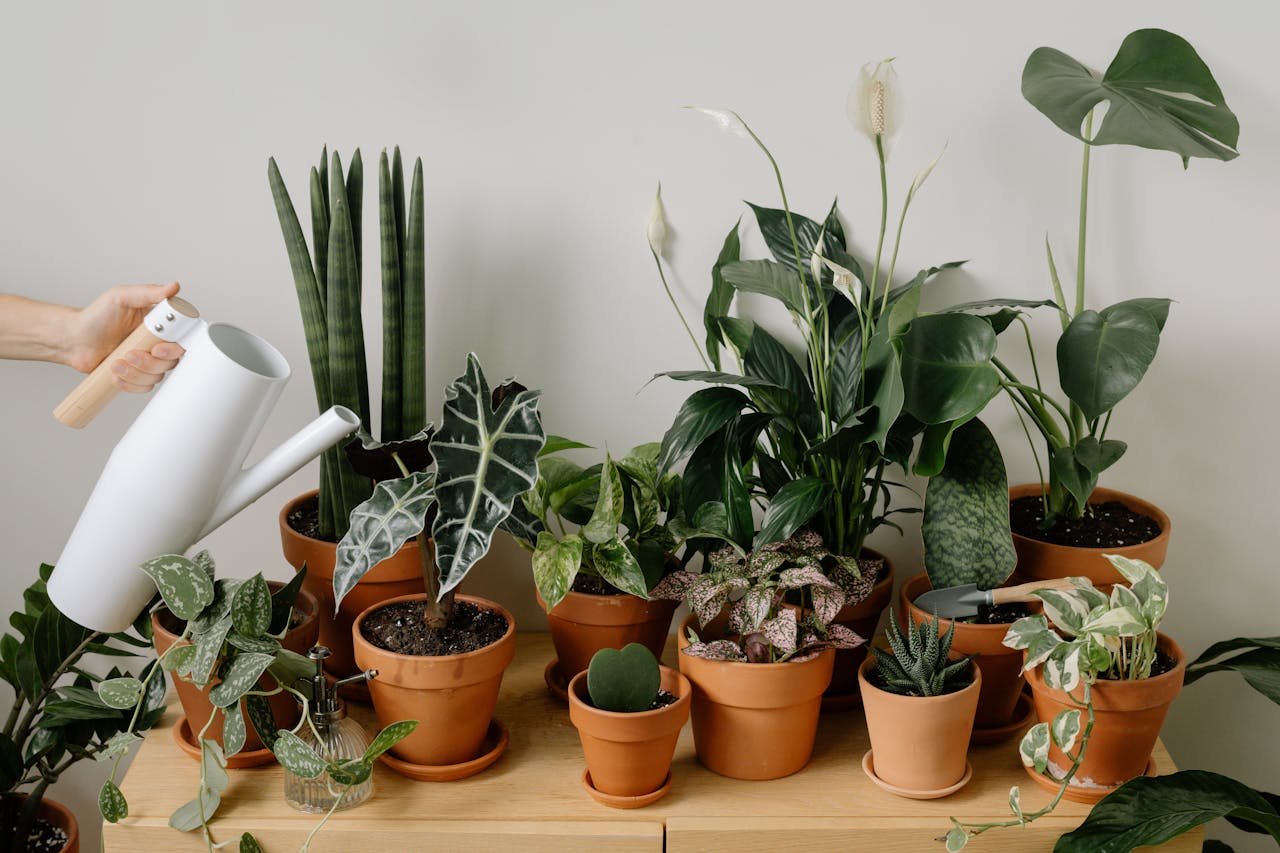Maintaining healthy and vibrant Aglaonema Pink plants can transform any indoor space into a lush, green oasis. Known for their stunning pink and green foliage, Aglaonema Pink (also called Chinese Evergreen) are popular choices among houseplant enthusiasts. However, one of the most common challenges faced by Aglaonema Pink owners is mastering the art of watering.
Overwatering and underwatering can both lead to serious issues, affecting the plant’s health and longevity. This comprehensive guide provides essential watering tips to help you keep your Aglaonema Pink thriving.

1. Understanding Aglaonema Pink
Aglaonema Pink, part of the Aglaonema genus, are beloved for their striking variegated leaves that showcase hues of pink, red, and green. Native to tropical and subtropical regions of Asia, these plants are well-suited to indoor environments, making them excellent choices for homes and offices. They are relatively low-maintenance, but like all houseplants, they require specific care to thrive.
2. The Importance of Proper Watering
Watering is a critical aspect of plant care that directly impacts the health of your Aglaonema Pink. Proper watering ensures that the plant receives the necessary moisture without causing root rot or dehydration. Understanding the plant’s watering needs and implementing the right techniques can prevent common issues associated with overwatering and underwatering.
Also Read- Enhancing Indoor Air Quality With Aglaonema Pink: A Natural Solution
3. Signs of Overwatering

Overwatering is one of the most frequent mistakes made by plant owners. Here are key indicators that your Aglaonema Pink may be receiving too much water:
- Yellowing Leaves: Consistently yellowing leaves, especially the lower ones, can signal excess moisture.
- Wilting Despite Wet Soil: If the plant appears wilted even when the soil is moist, overwatering might be the culprit.
- Soft, Mushy Stems: Overwatered plants often develop soft or mushy stems, indicating root rot.
- Mold or Mildew: The presence of mold or mildew on the soil surface is a clear sign of overwatering.
- Foul Odor: A musty or rotten smell emanating from the soil suggests decaying roots caused by too much water.
4. Signs of Underwatering
Conversely, underwatering can also harm your Aglaonema Pink. Watch for these symptoms to ensure your plant is adequately hydrated:
- Dry, Crispy Leaf Tips: Underwatered plants often exhibit dry and crispy edges on their leaves.
- Wilting Leaves: Similar to overwatering, wilting can also result from insufficient water.
- Shriveled Leaves: Leaves may become shriveled and lose their vibrant color when the plant is dehydrated.
- Slow Growth: A lack of water can stunt the plant’s growth, making it appear leggy or sparse.
- Brown Spots: Brown, dry spots on the leaves can indicate chronic underwatering.
Also Read- Aloe Vera And Aglaonema Pink: The Perfect Pair For A Healthy Home
5. Step-by-Step Watering Tips

Achieving the perfect watering balance involves understanding your plant’s needs and environmental factors. Follow these steps to water your Aglaonema Pink correctly:
Step 1: Assess the Soil Moisture
Before watering, check the soil moisture by inserting your finger about an inch deep into the soil. If it feels dry, it’s time to water. If it’s still moist, wait a few more days.
Step 2: Choose the Right Watering Technique
- Bottom Watering: Place the pot in a shallow dish of water and allow the plant to absorb moisture from the bottom. This method prevents water from sitting on the leaves, reducing the risk of fungal issues.
- Top Watering: Water the plant evenly around the base until excess water drains out from the pot’s drainage holes. Ensure the water reaches the roots without over-saturating the soil.
Step 3: Water Evenly and Thoroughly
Ensure that you water the entire root zone evenly. Avoid concentrating water in one spot, which can lead to uneven moisture distribution and root rot.
Step 4: Allow Proper Drainage
Always use pots with drainage holes to prevent water from accumulating at the bottom. Empty any excess water from the saucer after watering to avoid root rot.
Step 5: Adjust Watering Frequency Based on Season
- Spring and Summer: Increase watering frequency as the plant grows and the weather is warmer.
- Fall and Winter: Reduce watering as the plant’s growth slows and the environment becomes cooler and less humid.
6. Best Practices for Watering Aglaonema Pink

Implementing best practices can help maintain the optimal moisture levels your Aglaonema Pink needs to thrive:
a. Use Well-Draining Soil
Aglaonema Pink prefers well-draining soil to prevent water from stagnating around the roots. A mix designed for houseplants or a combination of peat, perlite, and vermiculite works well.
b. Maintain Consistent Moisture Levels
Avoid drastic changes in watering frequency. Consistent moisture helps the plant maintain steady growth and reduces stress.
c. Monitor Humidity and Temperature
Aglaonema Pink thrives in environments with moderate humidity and temperatures between 65°F to 80°F (18°C to 27°C). Higher humidity can reduce the need for frequent watering, while lower humidity may require more regular moisture.
d. Avoid Cold Water
Use room-temperature water to prevent shocking the plant’s roots. Cold water can hinder the plant’s ability to absorb moisture efficiently.
e. Fertilize Appropriately
During the growing season, use a balanced houseplant fertilizer diluted to half strength. Proper nutrition supports the plant’s overall health and its ability to manage water uptake effectively.
7. Additional Tips for Maintaining Optimal Moisture
Enhance your Aglaonema Pink’s health with these supplementary moisture-related tips:
a. Use a Humidity Tray
Place a tray filled with water and pebbles beneath the plant’s pot. As the water evaporates, it increases the surrounding humidity, benefiting moisture-loving plants like Aglaonema Pink.
b. Group Plants Together
Creating a microenvironment by grouping several houseplants can naturally increase humidity levels, reducing the likelihood of underwatering.
c. Regularly Inspect the Plant
Frequent checks for signs of overwatering or underwatering allow for timely adjustments to your watering routine, ensuring the plant remains healthy and vibrant.
d. Rotate the Plant
Rotate your Aglaonema Pink periodically to ensure all sides receive equal light exposure. This promotes even growth and prevents the plant from leaning towards the light source, which can affect its overall health.
Conclusion
Proper watering is fundamental to the health and beauty of your Aglaonema Pink. By understanding the signs of overwatering and underwatering, and following these step-by-step watering tips, you can maintain optimal moisture levels and ensure your plant thrives.
Remember to consider environmental factors like humidity and temperature, and adjust your watering practices accordingly. With consistent care and attention, your Aglaonema Pink will continue to be a stunning centerpiece in your indoor garden.













Leave a comment
This site is protected by hCaptcha and the hCaptcha Privacy Policy and Terms of Service apply.